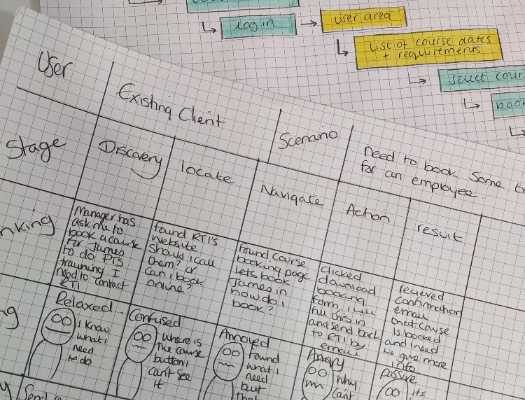We all want better results, right? One building block of achieving better results is to truly understand who our user is.
By doing this we can better understand how to market to them! This is where a user persona comes in!
Read on to find out how to create a user persona and why it’s a great asset for your marketing campaigns or website.
Table of Contents
So what is a user persona?
A user persona is basically an imagining of your ideal customer or at least a user that you would market to. It’s a way to think about and understand the people to who you are marketing.

This persona, or avatar, is generally based on real data and research about your target market.
Creating a user persona can help you to better understand the people you are marketing to, and craft your message and marketing strategy accordingly.
Why do you need a user persona?
Whether you are bringing a new product to market or are looking for ways to improve your conversions online, creating a user persona can help you to better understand your customers’ needs and how they interact with your product or service on your website.
This is particularly helpful in the mid-design stage as it allows you to empathise with your customer and identify opportunities for improvement or areas that you may not have even considered.
At a minimum your user persona should be able to answer the following questions:
- Who is my ideal user
- What is my user’s goal
- What issues do my users have when completing the customer journey
- What else does my user need for a smooth transaction
How do you create a user persona?
Creating a user persona is not an exact science, but there are some key steps that you can follow to ensure that your persona is as useful and accurate as possible.
A good user persona will include the following information
- User Demographic
- User Profile
- User Goals
- User scenario or customer journey
When breaking down your ideal users it’s a great idea to spend some time discussing this with your wider team. This will helps give alternative insight into your process and as a plus ensures that everyone is on the same page when it comes to your target market.
Another way of narrowing down your target market is to create a survey around your product or service, if you do decide to do this be detailed in your questions and remember to take the following details into account.
Step 1: User demographic
A user demographic is all the aspects and facts that make up your user avatar. Grab your pen and paper and consider the following elements:
- Gender
- Age
- Marital status
- Location
- Income
- Education
User Profile
This is where you start to get into the nitty-gritty of who your user is.
What kind of things do they like to do in their free time? What are their hobbies? Do they have children?
Remember to stay true to the context of your product or service, for example, if you are testing a parent portal you will defiantly need to know how many children your users have but probably not what their favourite food is.

Step 2: User Goals
What are your users trying to achieve by using your product or service? What needs does it fulfil for them?
Is there a product or service that part meets this need already?
For example, You are launching a new clothing line. Your user will definatly have clothes already! But what qualities might they be looking to improve on or what styles might they already like.
It’s important to understand what your user is hoping to achieve as this will inform the design of your product or service and how you market it.
Step 3: User Scenario/Customer Journey
What does the customer journey look like for this user? How do they interact with your product or service?
A great way of identifying this is laying out each step a customer needs to take to convert for you.
In the example below we see the steps that are needed for the client to book a course through a training company’s website.

Once you have defined your user journey you will be able to see if there are any pain points or areas that could be improved?
This is where your empathy for the user really comes into play. Try and put yourself in their shoes and think about what would make the user experience better.

Top Tips
1. Use real data where possible
2. Avoid making assumptions
3. Build empathy with your users
4. Be specific
5. Keep it simple
6. Take advantage of your wider team’s opinion
All in all, creating a user persona will help to improve your chances of success as you’ll be able to focus on designing features that appeal to your target market, and crafting marketing messages that resonate.
For more on this topic, I suggest reading through our article on A quick guide to User Journey Mapping
If you need help with any aspect of your digital marketing campaigns or are interested in UX design for your business, please contact the team at Dzines. We would love to help!




